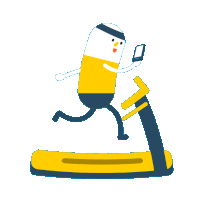

Unveiling the V Bar Lat Pulldown
Understanding the V Bar Lat Pulldown
Benefits of V Bar Lat Pulldowns
Engagement of Rhomboids and Trapezius
Muscles Worked in V Bar Lat Pulldowns
Refining Your V Bar Lat Pulldown Technique
Unlocking Additional Benefits of V Bar Lat Pulldowns
Fine-Tuning Your V Bar Lat Pulldown Routine
Welcome to the ultimate guide on V Bar Lat Pulldowns, a robust exercise that can significantly enhance your upper body strength and aesthetics. In this comprehensive exploration, we'll guide you through the correct execution of V Bar Lat Pulldowns, elucidate the diverse benefits they offer, identify the muscles they target, and provide valuable tips to optimize your experience. Let's dive in!
The V Bar Lat Pulldown is a compound exercise designed to engage various muscle groups in the upper back. By pulling a V-shaped bar attached to a cable machine toward your upper chest, you activate muscles crucial for building strength and achieving a well-defined upper torso.
Mastering the proper form is vital for reaping the full benefits of V Bar Lat Pulldowns.
The primary focus of V Bar Lat Pulldowns is the activation of the latissimus dorsi, contributing to a broader and more sculpted back.
In addition to the lats, this exercise actively engages the rhomboids and trapezius muscles, enhancing upper back strength and stability.
The V Bar provides versatility, allowing for different grip positions. Experimenting with wide and narrow grips targets distinct areas of the back, promoting well-rounded strength development.
The constant resistance during the pulldown enhances grip strength, which is crucial for various lifting exercises and overall functional fitness.
Engaging the surrounding muscles promotes shoulder joint stability, potentially reducing the risk of shoulder injuries.
The controlled range of motion in V Bar Lat Pulldowns aids in maintaining and improving flexibility in the shoulders and upper back.
The primary muscle activated during V Bar Lat Pulldowns, the latissimus dorsi, undergoes substantial engagement, leading to increased muscle mass and definition.
Engagement of these muscles supports a well-developed upper back and contributes to good posture.
While not the primary focus, the pulling motion involves the biceps and forearms, adding secondary benefits for arm strength.
The deltoids are indirectly engaged, enhancing shoulder stability and contributing to a balanced physique.
Achieving the ideal grip is foundational to an effective V Bar Lat Pulldown. Experiment with both wide and narrow grips to target different areas of the back. A wider grip emphasizes the outer lats, contributing to a broader appearance, while a narrower grip targets the middle and upper back, promoting a well-defined upper torso.
Your seated posture plays a crucial role in the efficacy of the exercise. Ensure your thighs are securely positioned under the padded support, providing stability during the pull. Maintain a straight back with a slight lean backward, engaging your core to stabilize your body throughout the movement.
Focus on initiating the pull from your lats. As you pull the V Bar down toward your upper chest, visualize squeezing your shoulder blades together. This deliberate contraction intensifies the engagement of the targeted muscles. Avoid using momentum or swinging your body, as this diminishes the effectiveness of the exercise.
The controlled release of the V Bar is as important as the pull itself. Resist the temptation to let the bar snap back to the starting position. Slowly and deliberately release the bar, maintaining tension on your muscles throughout the negative phase of the repetition. This controlled descent maximizes muscle engagement and contributes to overall strength development.
Developing a strong mind-muscle connection is a game-changer in any exercise, and V Bar Lat Pulldowns are no exception. Concentrate on the muscles being worked, particularly the lats and upper back, throughout the entire range of motion. This heightened awareness enhances muscle activation and contributes to more effective training.
To break through plateaus and keep your workouts challenging, consider incorporating intensity techniques. Drop sets, where you reduce the weight after reaching muscle failure, or incorporating pauses at different points in the movement can elevate the difficulty of your V Bar Lat Pulldowns, leading to greater muscle adaptation and growth.
Striking the right balance between repetitions and resistance is crucial for progressive overload, a key principle in muscle development. Aim for a rep range that challenges your muscles while maintaining proper form. As you become more proficient, gradually increase the resistance to ensure continued progress.
Your grip width on the V Bar can be tailored to specific training goals. A wider grip emphasizes the lateral muscles, contributing to a wider back, while a closer grip targets the middle and upper back. Periodically changing your grip width adds variety to your routine and promotes balanced muscle development.
While the traditional V Bar Lat Pulldown is highly effective, introducing variations adds versatility to your routine. Experiment with different attachments, such as straight bars or wide grip bars, to target muscles from different angles. This not only prevents monotony but also ensures comprehensive muscle stimulation.
Complement your V Bar Lat Pulldowns with both compound and isolation exercises for a well-rounded back workout. Compound movements like deadlifts and rows contribute to overall back strength, while isolation exercises like face pulls or rear delt flyes target specific areas for more detailed development.
In conclusion, the V Bar Lat Pulldown is not just an exercise; it's a nuanced and versatile tool for sculpting a powerful and aesthetically pleasing upper back. By refining your technique, exploring variations, and understanding how to customize your routine, you can unlock the full potential of this dynamic exercise and achieve comprehensive upper body development.
.png)